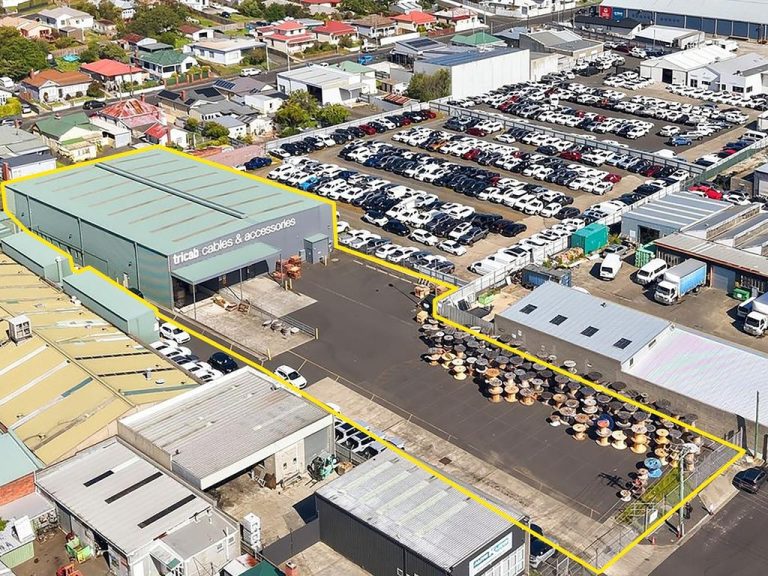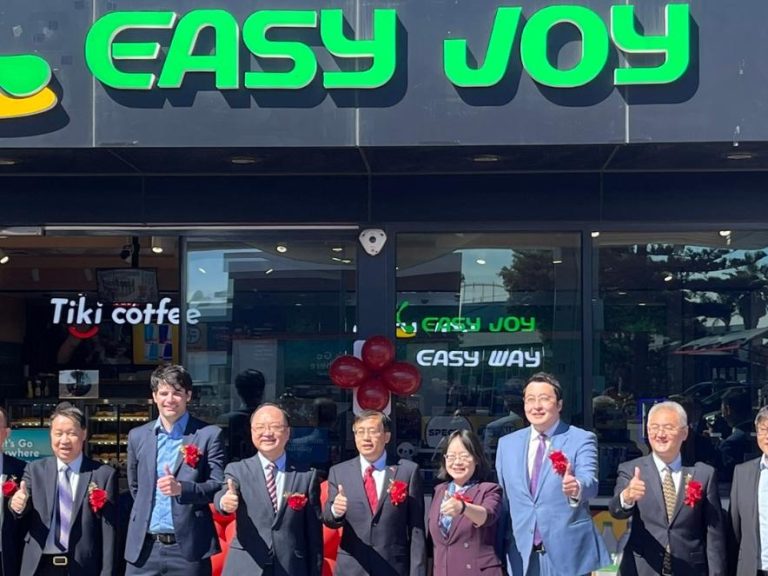Healthy returns: Why supermarkets have investors lining up
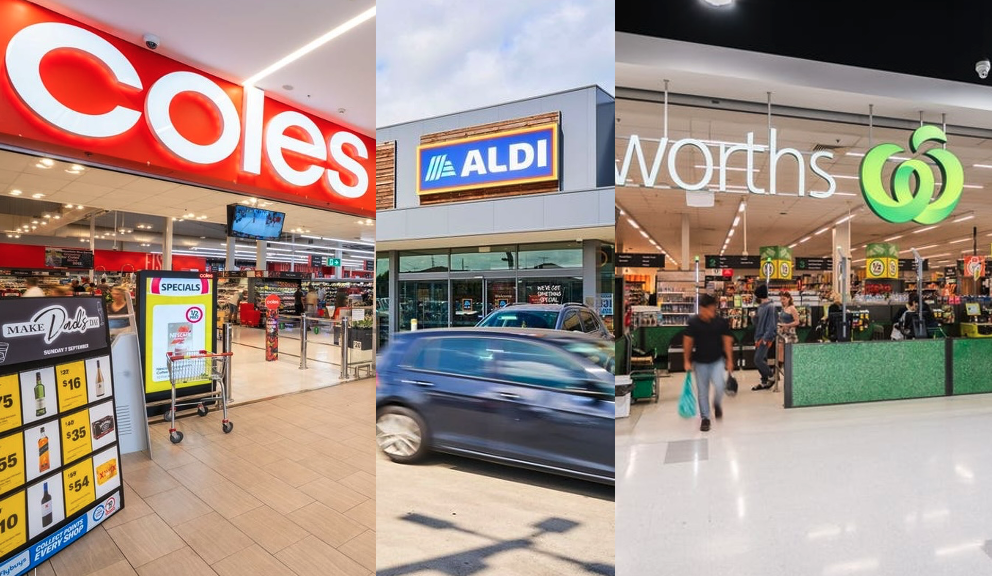
Supermarkets are considered hot property in the investment world. Filled with weekly necessities and offering healthy returns, this enduring retail class continues to hold up well despite the economic conditions.
Supermarkets aren’t just where Australians pick up their weekly groceries. These often vast retail assets are the home of long-term value for investors, with more than a quarter of a billion dollars in sales transacted since July 2024.
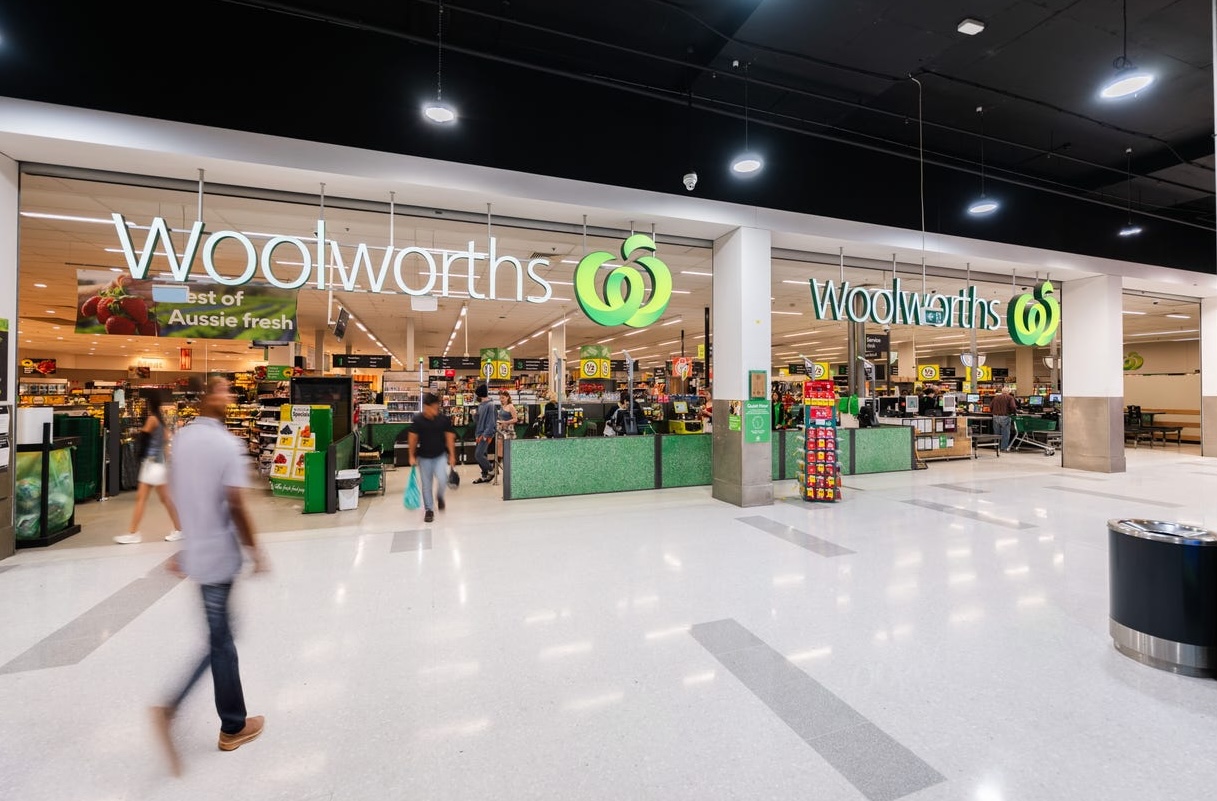
Offering secure tenancies and long leases, supermarkets are considered recession-proof investments. Picture: realcommercial.com.au
Often providing an attractive and secure anchor tenant within a retail shopping complex, or utilising a highly specialised and strategically located warehouse, big player names like Woolworths, Coles, Aldi and Costco – though bulk-buying discount giant Costco owns around 80% of its sites globally – are considered the holy grail of tenants, with their affiliated liquor brands and fuel partners regularly setting up nearby.
The recent invitation by Prime Minister Anthony Albanese to LuLu Hypermarket to set up shop in Australia stirred up speculation over where the Middle Eastern supermarket giant would find sites for its megastores that are three times the size of a typical Australian supermarket.
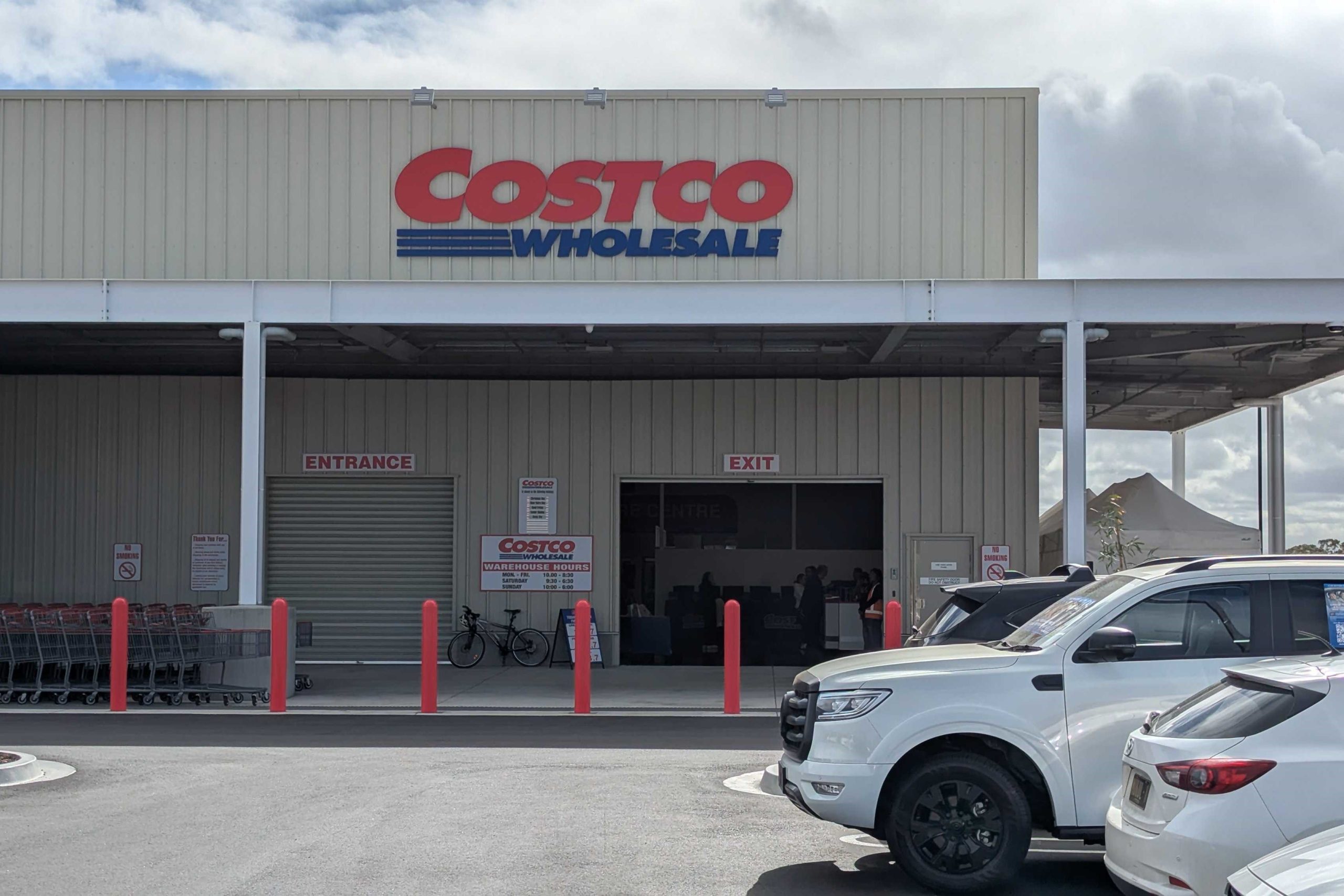
Costco owns most of its sites, though neighbouring sites are popular with investors as tenants look to be close to the bulk buying grocery giant.
But smaller and independent grocers such as IGA, Foodworks and QE also make highly desirable tenants within regional neighbourhood centres and small-scale inner city metro stores.
Considered a highly resilient, pandemic- and recession-proof real estate sector, supermarkets stock weekly household necessities, providing investors with guaranteed foot traffic and decent returns.
Stocking up
The supermarket sector has experienced substantial growth over the past decade, with annual revenue exceeding $143 billion in 2024, up more than $44 billion since 2015.
Beyond the duopoly of Coles and Woolworths, a number of independent supermarkets dominate suburban shopping centres and regional areas.
Statistica figures show that there are around 9,640 supermarkets and grocery stores operating in Australia by the end of 2024 financial year, 3,170 of which were located in New South Wales. Victoria was home to the next highest number of supermarkets.
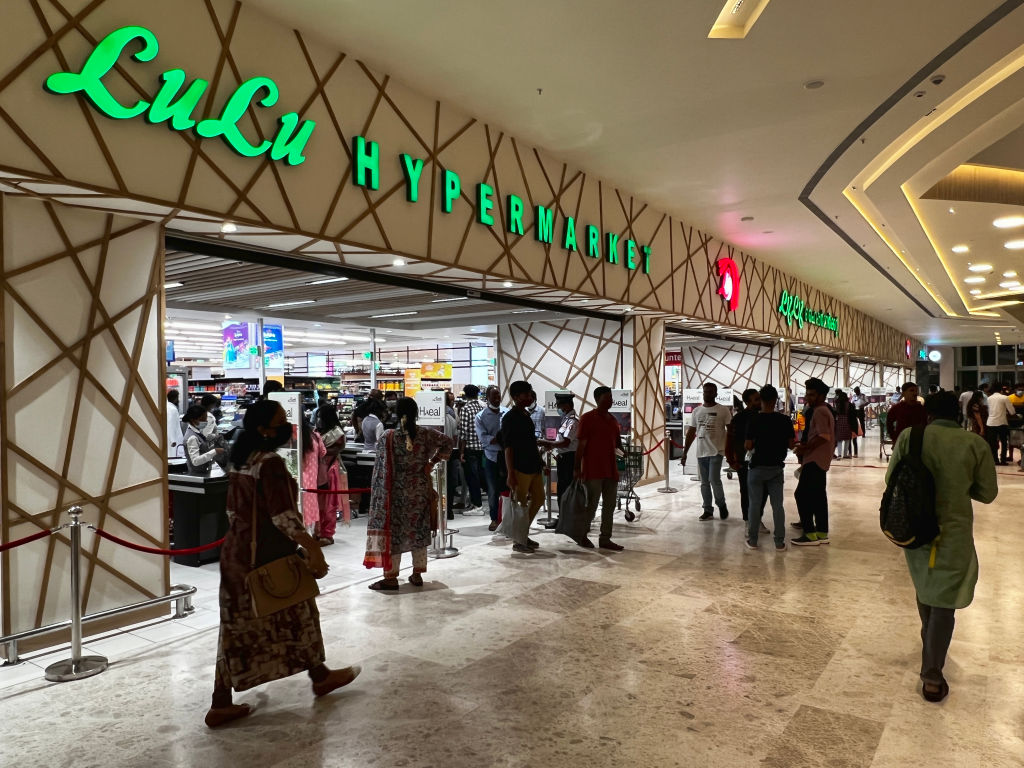
Prime Minister Anthony Albanese has invited Lulu Hypermarket to set up shop in Australia to increase competition. Picture: Getty
Large format supermarkets are increasingly popular, with 3,868 supermarkets larger than 500sqm dotted across the nation, equating to one supermarket for every 6,800 residents.
By contrast, metropolitan Sydney has just one full-line supermarket for every 11,600 people. This clear undersupply issue is primarily due to the scarcity of available sites.
Buying up
Supermarkets change hands frequently, highlighting the depth of demand and the reputation of these assets as defensive investments with stable cash flow and reliable long-term tenants.
Limited supply of quality properties and strategic expansion by chains maintain strong competition for available sites, keeping prices firm and yields competitive. Investor appetite spans institutions, syndicates, and private buyers, each attracted by stable income, defensive characteristics, and low management overheads.
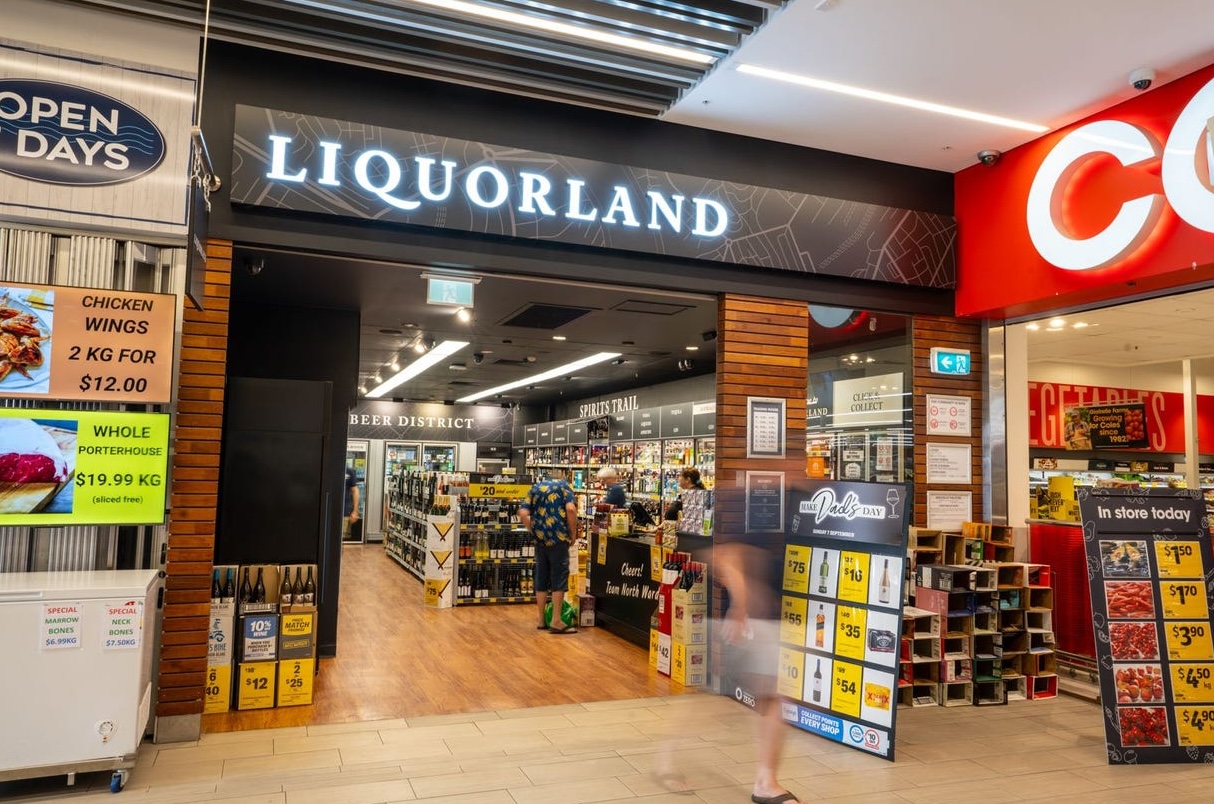
Affiliated liquor brands often occupy neighbouring retail space. Picture: realcommercial.com.au
Darren Beehag, senior director of Burgess Rawson from CBRE says the sector’s performance also reflects consumer dynamics.
“While online grocery shopping is growing, penetration remains relatively low compared to other retail categories; many shoppers still prefer the tactile experience of selecting produce, browsing specials, or making last-minute meal decisions in-store, reinforcing foot traffic that underpins supermarket success,” Mr Beehag said.
Demographic trends, population growth, and new housing developments ensure ongoing demand for grocery retail, further supporting the asset class. From metropolitan trophy sites to regional supermarkets, strong investor demand underscores the defensive and growth characteristics of these investments, he says.
Just last month, a fully leased shopping centre including six specialty tenants anchored by Coles located in Brighton Village Shopping Centre at 6 Kingsbridge Boulevard sitting on a 1.22ha parcel of land sold on 25 September.
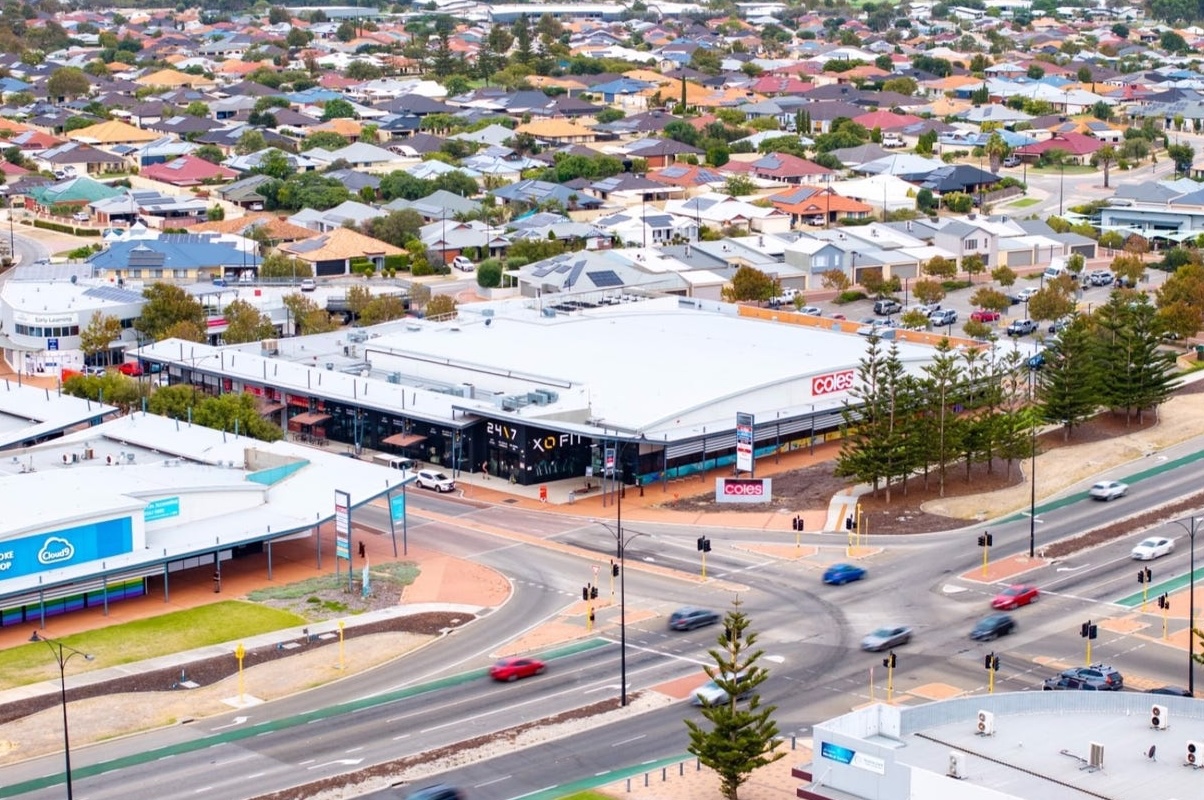
Recently sold: The fully leased neighbourhood shopping centre in Perth is anchored by Coles with a 20 year lease. Picture: realcommercial.com.au/sold
The Morris General Store in the seaside Tasmanian township of Swansea also sold on 19 September. Tenanted by IGA, the 1720sqm property in an iconic building has been utilised as a supermarket for many years and is currently the only supermarket in the small township.
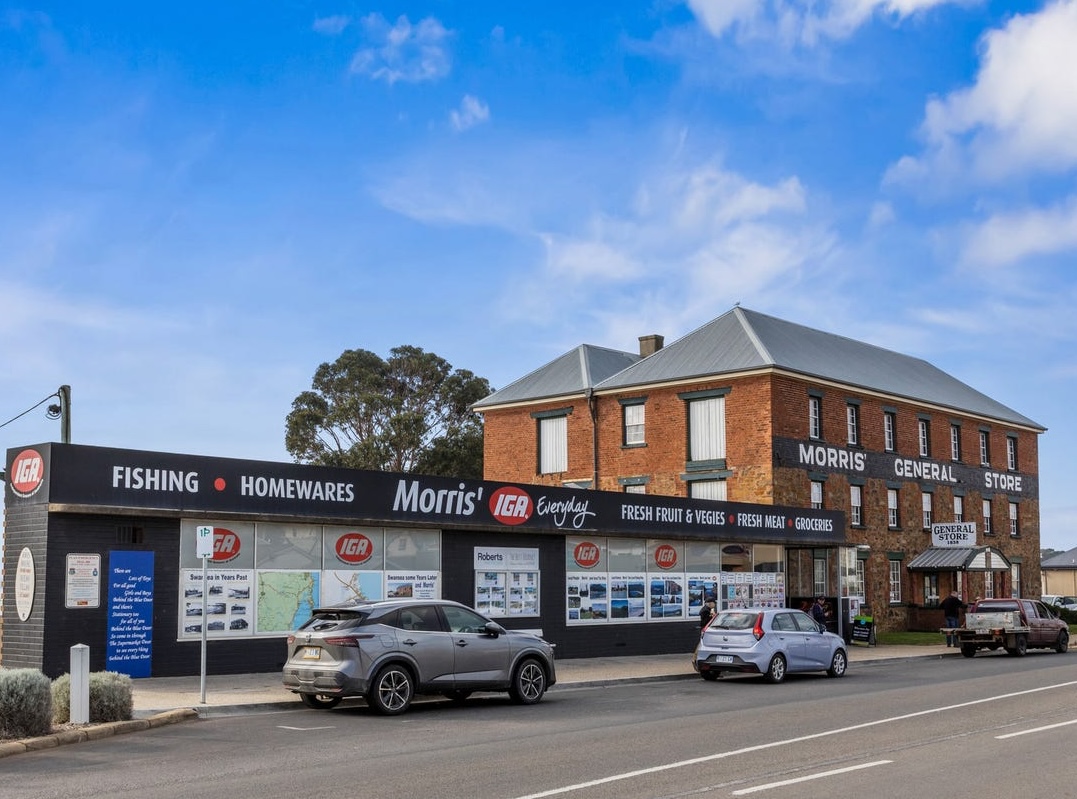
Recently sold: The only supermarket in Swansea. Picture: realcommercial.com.au
Burgess Rawson from CBRE currently has a flagship Woolworths Supermarket at 358 Orrong Road, Caulfield North listed for sale.
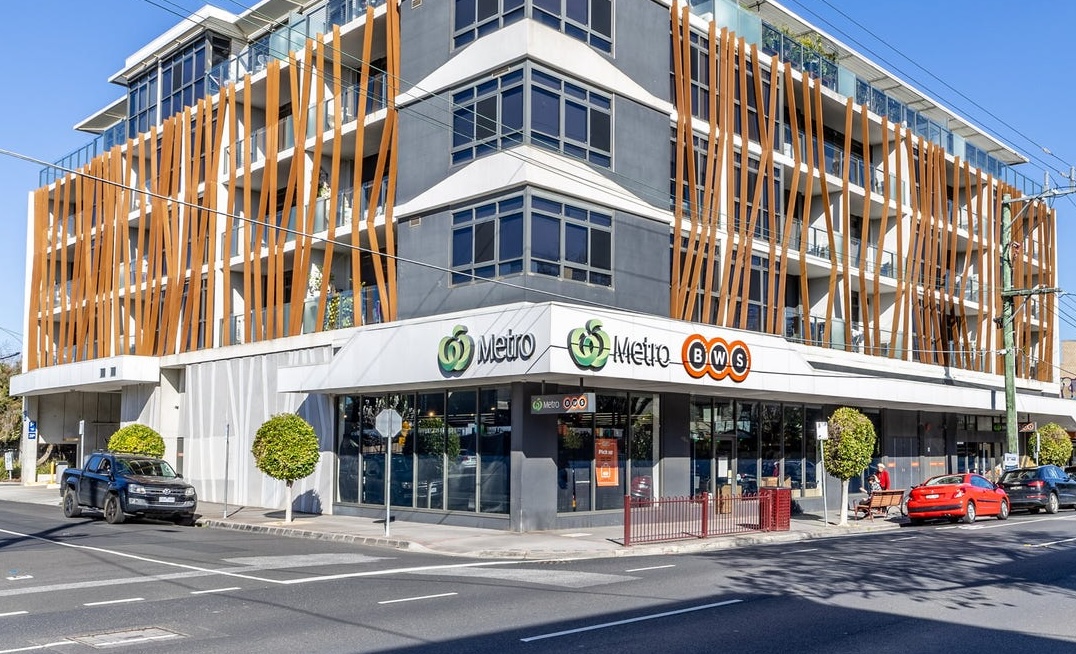
The Caulfield North site has a long 17.5 year lease to Woolworths to 2035 plus options extending to 2055. Picture: realcommercial.com.au
With a 17.5 year lease to Woolworths plus options extending to 2055, the listing is being positioned as a trophy set and forget investment opportunity for sale by portfolio auction.
Healthy returns
Burgess Rawson says supermarkets can offer good returns compared to other investment sectors. For this reason, supermarkets are among the most fiercely contested asset classes right now, with yields regularly sub-5% and some even transacting below 4%.
The average yield is 5.48% while supermarket assets usually only spend 33.4 days on the market.
“That shows just how much competition there is for long-term, defensive income streams,” Mr Beehag said.
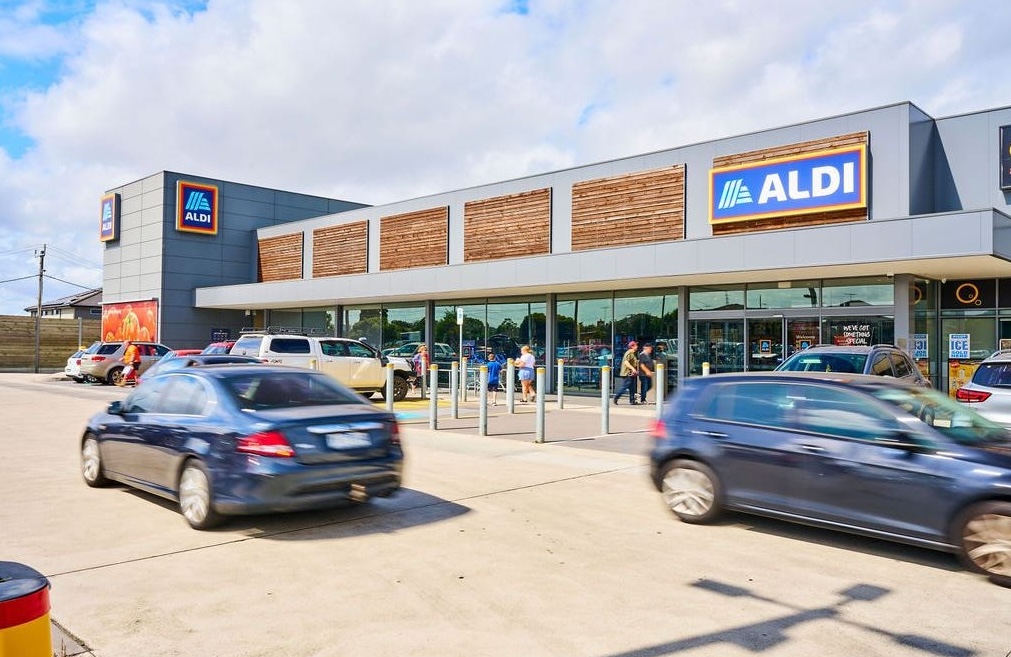
Discount grocer Aldi is the third largest player behind Woolworths and Coles, and requires a smaller store footprint than its larger competitors. Picture: realcommercial.com.au/sold
But you need to know what to look out for. “National chains like Woolworths and Coles anchor large shopping centres, driving foot traffic that benefits surrounding tenants, while smaller independents such as IGA stores adapt offerings to local preferences, providing both consistency and a sense of familiarity,” Mr Beehag said.
Even as shopping habits shift and consumer behaviour evolves, supermarkets have retained their enduring appeal among both shoppers and investors.
“For investors, the appeal lies in fundamentals. Supermarkets trade in essentials—fresh food, pantry staples, household basics—that Australians need regardless of broader economic conditions, giving them resilience few other asset classes can match.”
The strength of these brands is evident in their financial performance. Woolworths Group, with over 1,100 stores, posted FY25 revenue of AU$69.08 billion, up 1.7% from FY24, with supermarkets contributing AU$51.45 billion in sales. Coles, operating 861 stores, reported AU$23 billion in revenue, a 3.6% increase, with supermarkets growing 4.3%.
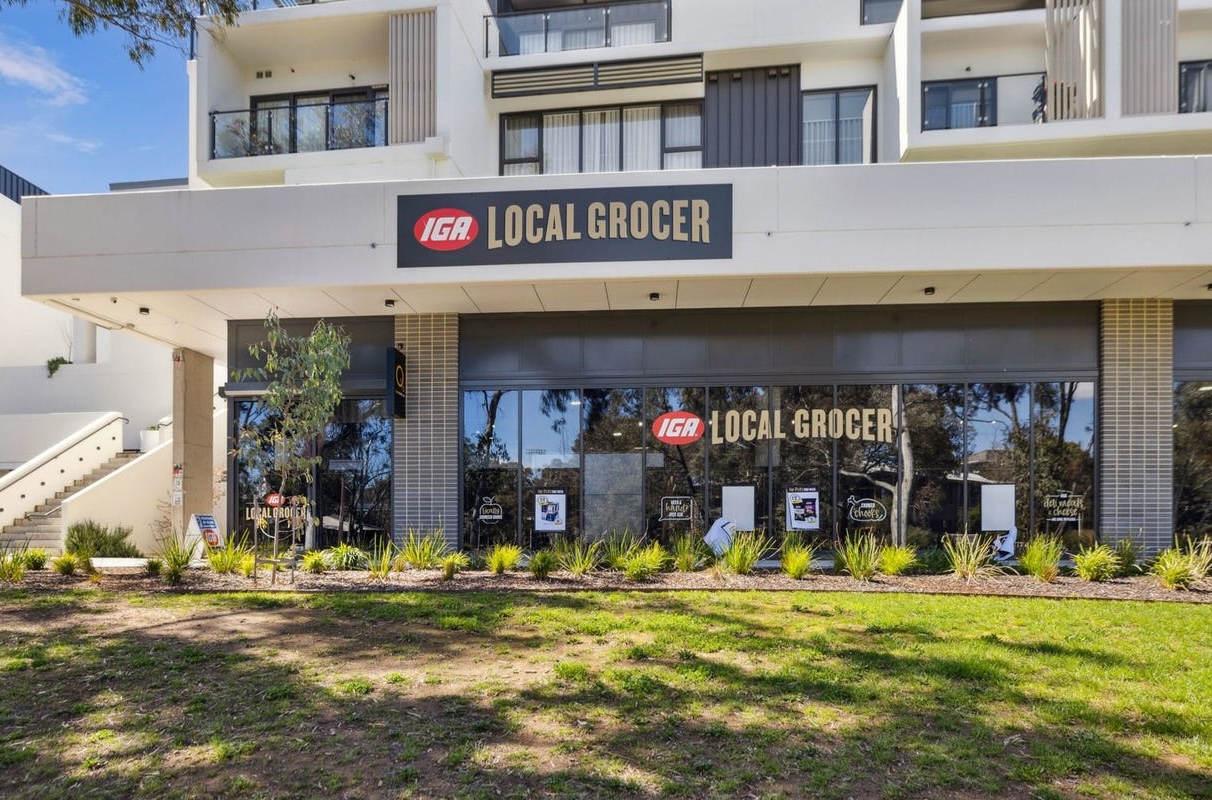
Bruce IGA is on the market with passing net income of $346,112 per annum with 4% fixed annual increases. Picture: realcommercial.com.au
Aldi continues selective expansion, recently opening its 600th store, while IGA (the brand owned by parent company Metcash), with more than 1,200 stores, saw revenue rise 8.9% to AU$17.32 billion, including a 20.8% growth in food sales. These numbers reflect not only market penetration but also ongoing profitability and resilience, reinforced by dividends and continued investment in e-commerce and store upgrades.
For investors, supermarket assets benefit from long-term leases, often 10–20 years with fixed annual increases or market reviews, providing certainty of income, particularly attractive in periods of inflation or economic uncertainty. Tenants are highly capitalised and creditworthy, further reducing investment risk.
Current listings
Stonebridge Property Group currently has a supermarket listed for sale in Sydney’s lower North Shore.
The Albany Crows Nest is a 3,614 sqm Coles supermarket is one of three supermarkets servicing a growing trade area of more than 75,000 residents. The store is supported by a newly trading Liquorland Cellars, and a premium Montessori Childcare.
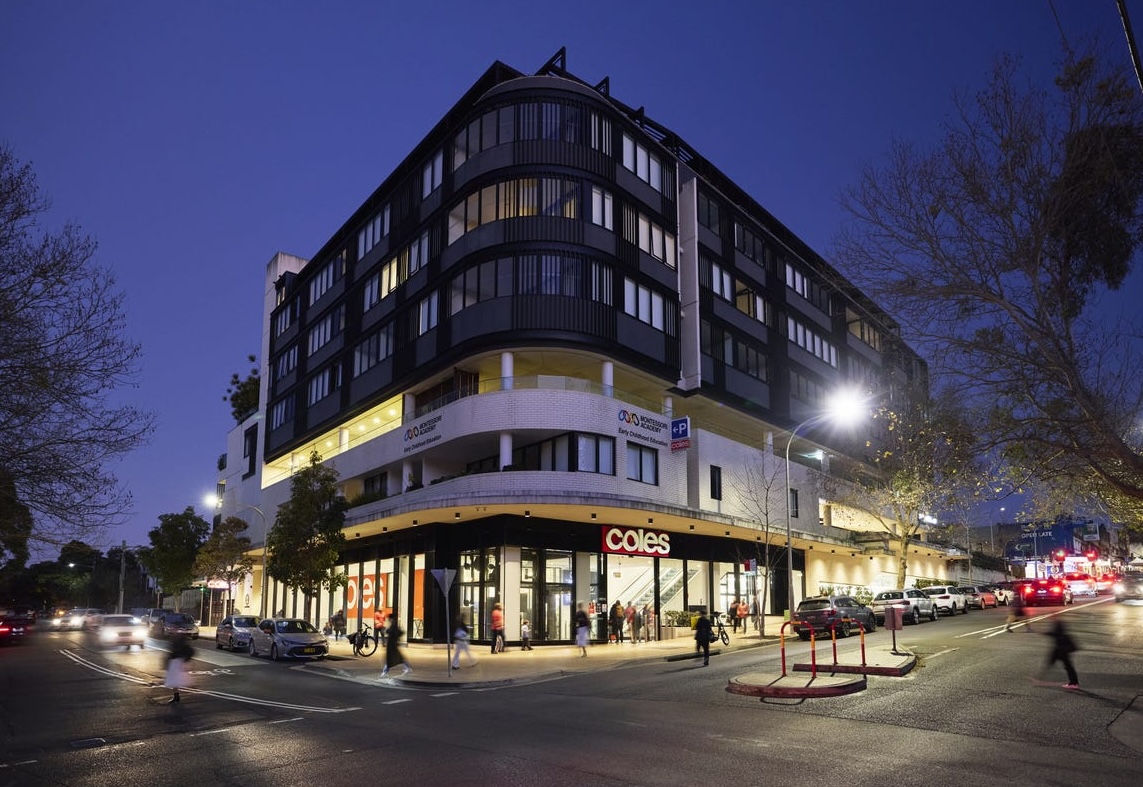
The Crows Nest site is anchored by Coles, Liquorland plus 3 specialty shops, a childcare centre & car wash. Picture: realcommercial.com.au
For the year ending June 2025, Coles Crows Nest recorded 5.5% year-on-year turnover growth, while sales are forecast to continue growing at an average of 3.9% per annum over the next decade, well above inflation forecasts and representing a 57% uplift by FY35.
Philip Garland, partner at Stonebridge said Coles Crows Nest is an example of how transport-oriented development initiatives can drive supermarket sales performance in hard to replicate locations.
“Investors will not only acquire the security of a Coles lease, but also a growth story powered by government-led infrastructure and housing delivering together with the safety of a lack of competing new supermarket offers,” Garland says.
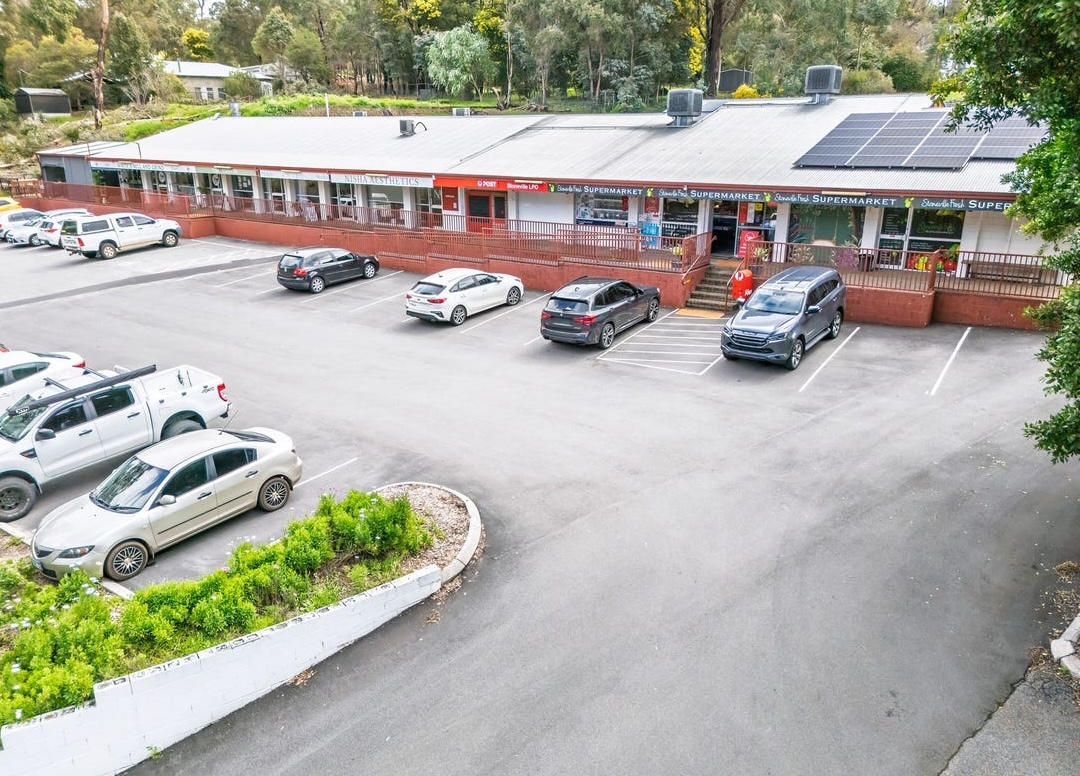
Independent grocers make attractive tenants for retail investors seeking entry level investments, like this neighbourhood shopping centre in Perth with annual rent of $116,000. Picture: realcommercial.com.au
Meanwhile, in Western Australia, a 0.64 ha shops and retail site located at 534 Richardson Road, Stoneville has also hit the market, which yields $116,000 in rent per annum.
Described as a high-performing shopping centre in the heart of Perth’s Eastern Hills, the property offers immediate income and the potential to develop the adjoining land.
The property comprises six fully leased tenancies, including a coffee shop, wellness consultant, pilates studio, skin care clinic, supermarket, post office and fruit and vegetable shop.

